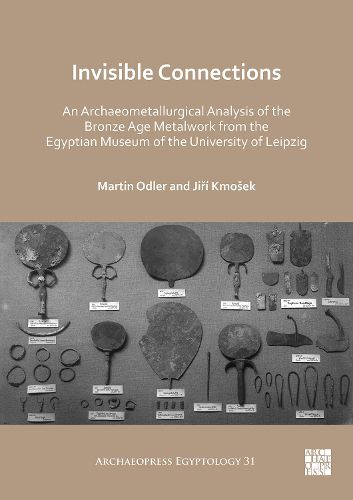Readings Newsletter
Become a Readings Member to make your shopping experience even easier.
Sign in or sign up for free!
You’re not far away from qualifying for FREE standard shipping within Australia
You’ve qualified for FREE standard shipping within Australia
The cart is loading…






The Egyptian Museum of the University of Leipzig has the largest university collection of ancient Egyptian artefacts in Germany. It includes important objects from the excavations of the most prolific excavator among the museum’s curators, Georg Steindorff, at the sites of Abusir, Aniba, and Giza, complemented by objects from Abydos, Thebes, and Kerma. The catalogue represents the results of an interdisciplinary project by Egyptologist and archaeologist Martin Odler, archaeometalurgist Jiri Kmosek and other participating researchers. A selection of 86 artefacts was analysed using a range of archaeometallurgical methods (X-ray fluorescence; metallography; neutron activation analysis; lead isotope analysis), providing a diachronic sample of Bronze Age Egyptian copper alloy metalwork from Dynasty 1 to Dynasty 19.
Besides currently popular focus on the ore provenance, the selection of the applied methods aimed also at the description of practical physical properties of the objects. The question of differences between full-size functional artefacts and models is addressed, as is the problem of ‘imports’ and their ethnic interpretation. The analyses brought many unexpected results to light, the most surprising being a bowl (AEMUL 2162) made of arsenical copper high in nickel, which has parallels in Chalcolithic and Early Bronze Age Anatolia, and was featured in an article in the Journal of Archaeological Science in 2018. The corpus presented here involves the largest analysed metalwork assemblage from the Nubian C-Group and the Egyptian New Kingdom, and it addresses the issue of the use of local Nubian ore sources versus the sources of copper from Cyprus and elsewhere.
$9.00 standard shipping within Australia
FREE standard shipping within Australia for orders over $100.00
Express & International shipping calculated at checkout
The Egyptian Museum of the University of Leipzig has the largest university collection of ancient Egyptian artefacts in Germany. It includes important objects from the excavations of the most prolific excavator among the museum’s curators, Georg Steindorff, at the sites of Abusir, Aniba, and Giza, complemented by objects from Abydos, Thebes, and Kerma. The catalogue represents the results of an interdisciplinary project by Egyptologist and archaeologist Martin Odler, archaeometalurgist Jiri Kmosek and other participating researchers. A selection of 86 artefacts was analysed using a range of archaeometallurgical methods (X-ray fluorescence; metallography; neutron activation analysis; lead isotope analysis), providing a diachronic sample of Bronze Age Egyptian copper alloy metalwork from Dynasty 1 to Dynasty 19.
Besides currently popular focus on the ore provenance, the selection of the applied methods aimed also at the description of practical physical properties of the objects. The question of differences between full-size functional artefacts and models is addressed, as is the problem of ‘imports’ and their ethnic interpretation. The analyses brought many unexpected results to light, the most surprising being a bowl (AEMUL 2162) made of arsenical copper high in nickel, which has parallels in Chalcolithic and Early Bronze Age Anatolia, and was featured in an article in the Journal of Archaeological Science in 2018. The corpus presented here involves the largest analysed metalwork assemblage from the Nubian C-Group and the Egyptian New Kingdom, and it addresses the issue of the use of local Nubian ore sources versus the sources of copper from Cyprus and elsewhere.